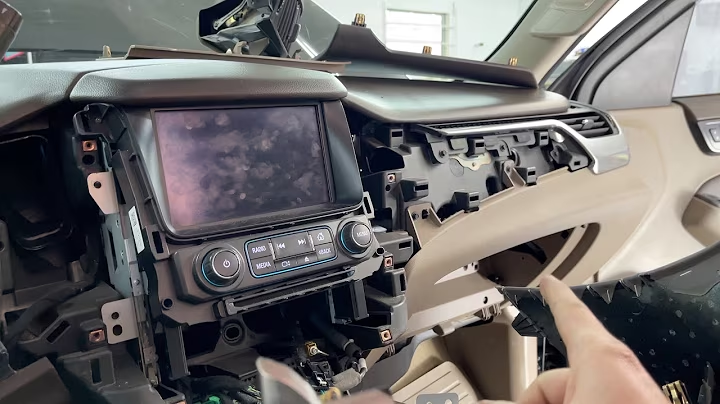How to Fix Dodge Ram ABS and Parking Light Issue
Table of Contents:
- Introduction
- The Common Issue with ABS and Parking Lights in Dodge Ram 1500
- Causes of ABS and Parking Light Issue
- a) Clutch Pack Retainer Clip Debris
- b) Metal Shards on Speed Sensor
- Symptoms of ABS and Parking Light Issue
- The Role of Differential Fluid in the Issue
- Steps to Fix ABS and Parking Light Issue
- a) Changing the Differential Fluid
- b) Removing Metal Debris from the Housing
- c) Checking for Damage and Clean-up
- d) Changing Sensors on Differential Housing and Transmission Housing
- Complete Rear Axle Replacement as a Solution
- Considerations When Buying a Remanufactured Rear Axle
- a) Limited Slip Differential Options
- b) Matching Gear Ratio
- Temporary Fixes vs Permanent Solutions
- Conclusion
Solving the Mystery of ABS and Parking Light Issue in Dodge Ram 1500
Have you been experiencing issues with the ABS and parking lights in your 2002 Dodge Ram 1500? If so, you're not alone. Many truck owners, especially those with model years ranging from 2002 to 2009, have encountered this frustrating problem. In this article, we will delve into the common causes of the ABS and parking light issue and provide you with the solutions to fix it.
The Common Issue with ABS and Parking Lights in Dodge Ram 1500
The ABS and parking light issue in Dodge Ram 1500 trucks is a persistent problem that many owners face. These lights tend to remain illuminated even when there are no apparent issues with the ABS system or the parking brake. While this issue may not significantly affect the performance of your vehicle, it can be bothersome and could potentially lead to more significant problems if not addressed.
Causes of ABS and Parking Light Issue
a) Clutch Pack Retainer Clip Debris
One of the primary causes of the ABS and parking light issue is the presence of debris from the clutch pack retainer clips in the differential housing. Over time, these c-clips can deteriorate or break, causing small metal shards to accumulate in the housing. These metal shards interfere with the proper functioning of the speed sensor on the top of the differential housing, resulting in the persistent illumination of the ABS and parking lights.
b) Metal Shards on Speed Sensor
The speed sensor, which relies on magnetic pulses for operation, can pick up the tiny metal shards present in the differential housing. As a result, the sensor fails to provide accurate readings, leading to a malfunctioning ABS system and an illuminated parking light.
Symptoms of ABS and Parking Light Issue
Identifying the symptoms associated with the ABS and parking light issue is crucial in diagnosing the problem accurately. Some common symptoms include the ABS and parking lights staying on even when the system is functional, the speedometer bouncing erratically, and the loss of ABS functionality during braking.
The Role of Differential Fluid in the Issue
The differential fluid plays a significant role in the ABS and parking light issue. It serves as a medium for debris suspension and helps prevent the accumulation of metal shards in the housing. Regularly inspecting and changing the differential fluid is crucial to maintain the integrity of the ABS system.
Steps to Fix ABS and Parking Light Issue
To resolve the ABS and parking light issue in your Dodge Ram 1500, follow these steps:
a) Changing the Differential Fluid
Begin by changing the differential fluid. It is essential to remove the entire cover and thoroughly clean the housing to eliminate any accumulated debris. Pay close attention to the magnet located at the bottom of the housing, as it often collects metal sludge. Cleaning the magnet will help prevent further interference with the speed sensor.
b) Removing Metal Debris from the Housing
Remove any remaining metal debris from the differential housing. Inspect the housing for any damage caused by the retainer clips and ensure that no pieces are lodged around the spider gears. It is vital to clean the housing as thoroughly as possible to prevent future issues with the ABS system.
c) Checking for Damage and Clean-up
Inspect the differential housing for any signs of damage, particularly near the bearings. If you notice any damage, it is recommended to consider a complete rear axle replacement. Clean and lubricate the housing to enhance its durability and smooth operation.
d) Changing Sensors on Differential Housing and Transmission Housing
Change the sensors on both the differential housing and the driver's side of the transmission housing. While the two sensors on the transmission are identical, the one on the differential housing may differ. Ensure that you use the correct model number sensor and attach the accompanying wire clip securely.
Complete Rear Axle Replacement as a Solution
For a permanent solution to the ABS and parking light issue, you may opt for a complete rear axle replacement. Remanufactured rear axles are readily available on the market, with various configurations and limited slip differential options. However, it is crucial to match the gear ratio of the replacement axle with your front differential if you drive a four-wheel drive.
Considerations When Buying a Remanufactured Rear Axle
When purchasing a remanufactured rear axle, keep the following considerations in mind:
a) Limited Slip Differential Options
You have the option to choose a limited slip differential, such as Original Equipment Manufacturer (OEM) or other configurations. Consider your driving preferences and choose the one that best suits your needs.
b) Matching Gear Ratio
Ensure that the gear ratio of the replacement axle matches your front differential. Matching gear ratios are essential to maintain optimal performance and prevent further issues down the line.
Temporary Fixes vs Permanent Solutions
While temporary fixes, such as cleaning the housing and changing the sensors, may alleviate the ABS and parking light issue, a complete rear axle replacement offers a more permanent solution. Assess your budget, preferences, and the severity of the problem before making a decision.
Conclusion
Solving the ABS and parking light issue in your Dodge Ram 1500 is crucial to ensure the proper functioning of your ABS system and parking brakes. By understanding the causes of this issue and following the recommended steps for fixing it, you can enjoy a safe and worry-free driving experience. Don't let the illuminated lights ruin your journey – take action today and resolve the mystery of the ABS and parking light issue in your Ram 1500.
Highlights:
- Common issue of ABS and parking light in Dodge Ram 1500
- Clutch pack retainer clip debris as a cause
- Symptoms and role of differential fluid
- Step-by-step guide to fix the issue
- Complete rear axle replacement as a long-term solution
- Considerations when buying a remanufactured rear axle
- Temporary fixes versus permanent solutions
FAQ:
-
Q: Can I temporarily fix the ABS and parking light issue without replacing the rear axle?
- A: Yes, cleaning the differential housing and changing the sensors can provide temporary relief from the issue. However, a complete rear axle replacement is recommended for a permanent solution.
-
Q: Why is it essential to match the gear ratio of the replacement axle with the front differential?
- A: Matching gear ratios ensure optimal performance and prevent further complications with the vehicle's drivetrain.
-
Q: How often should I change the differential fluid to prevent ABS and parking light issues?
- A: Regular inspections and fluid changes every 30,000 to 50,000 miles are recommended to maintain the integrity of the ABS system.







